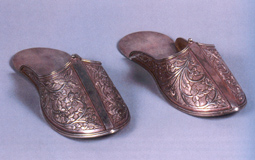
Art history/ Historiography, Crafts, Handlooms, Art, Editorial
A Sari Is A Many Splendoured Thing: A Thing of Joy Forever.
Tyabji, Laila
May, 1998
A radical feminist expressed pain that I painted my toe nails while having pretensions to being a real person. One of India's brightest young designers sat at my feet, amazed that I could wear a saree, grey hair and a jooda with "attitude". People stereotype you by what you wear. No wonder that the unconfident react to fashion trends like sheep or lemmings.
In the 60's, in our snobby, arrogant teens, only Bombay girls and Gujeratis from East Africa wore dresses. They were frankly considered incredibly "pap" - on par with oiling your hair or leaving your legs un-shaven. The rest of us wore sarees - tied low hipster style, belly buttons coyly see-through our chiffons and Finlay voiles. On picnics or pillion on our boyfriends' Lambrettas we wore pedal pushers a la Audrey Hepburn in the film Roman Holiday. Occasionally we wore kameezes (not kurtas then); cut without slits so they hobbled at the knee: so tight they had zippers down the side. But most of the time we stuck to sarees.
Today's young kids all have Marutis - they wouldn't be seen dead on a scooter. And sarees have become a no, no dead end for the contemporary Indian young - teetering uncertainly between Western punk and Western yuppie for their fashion options. The ready-to-wear that comes here, designer labels notwithstanding, is passé export reject before it even reaches Indian shop shelves, but the equally passé Star TV soaps and shows beamed on our screens persuade us they are extremely trendy.
In a recent issue of Filmfare, a magazine devoted to information on Bollywood stars, there were 57 photograph...
This is a preview. To access all the essays on the Global InCH Journal a modest subscription cost is being levied to cover costs of hosting, editing, peer reviewing etc. To subscribe, Click Here.
ALSO SEE
Sustaining Crafts and Livelihoods
Wood, Sharmila
The Tradition of Foot Covering in Indian Cultur...
Pathak, Anamika



